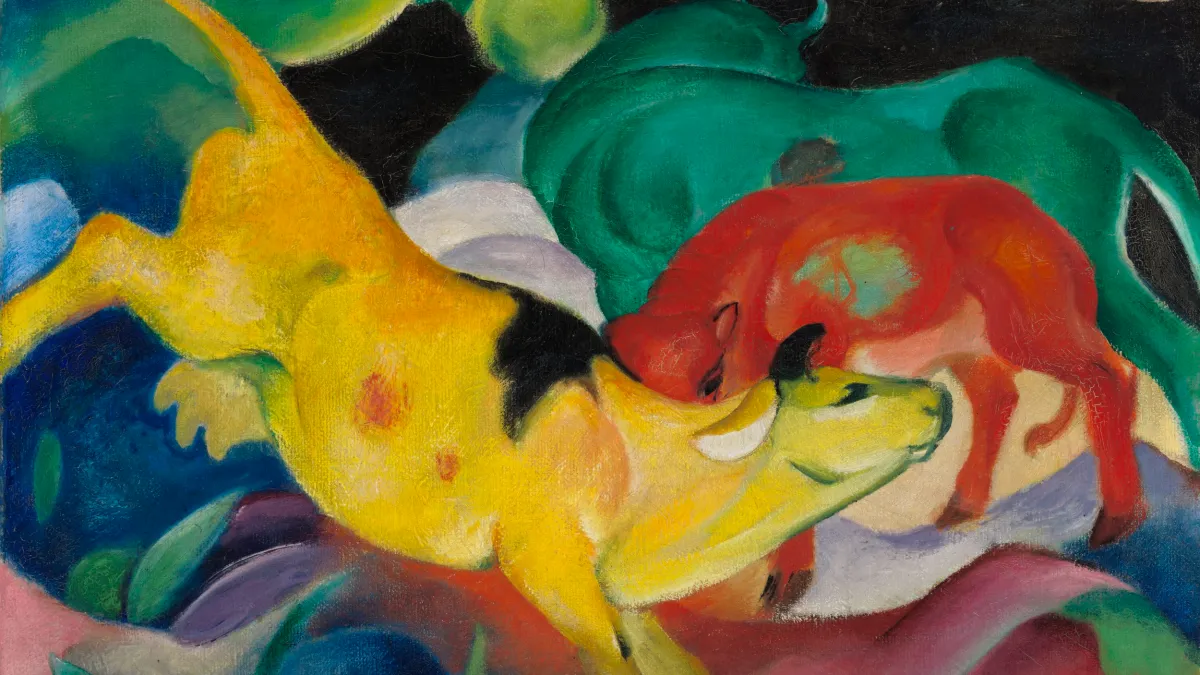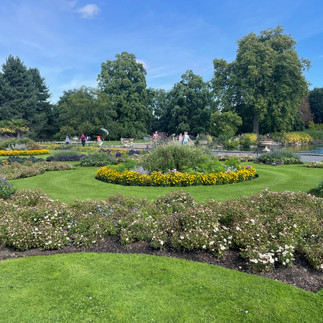
Trfalgar Square is central London’s meeting place and full of British history. You can see the tower of Westminster in the background and as you can see it’s a hub of activity on a daily basis. The National Gallery faces on to the square and that is our first stop. Inside the museum is home to more than 2300 paintings dated from the mid-13th century to the 19th century. It was founded in 1824. This is a visit to old friends most of which I haven’t seen in many years. I’m just going to share a few.

“The Ambassadors” by Hans Holbein the Younger painted in 1533. Hans Holbein was a court painter in the Tudor period and it may have been commissioned as a gift for the French ambassador (the one on the left). It contains one of the most elaborate still lifes of objects whose significance and symbolism is the subject of much debate. It is especially interesting for the anamorphic object in the middle at the bottom which viewed from the side morphs into a skull though I was hard pressed to make that happen.

Vermeer’s “Young Woman Seated at a Virginal” painted 1670-75 is one of a number with the same name. Another usually nearby of a woman standing by the virginal has been removed to Scotland, one among a number from the museum sent out to other parts of the UK to honor the 200th anniversary of the National Gallery. It’s always a pleasure to see Vermeer’s work since there is so little of it in the world.

Rembrandt’s “Feast of Belshazzar” from 1635 really does not come across in reproduction nearly as well as in person. Rembrandt’s use of impasto (painted texture) makes the jewels look three dimensional on the surface and his short brush strokes (food and cutlery on the table) are true genius. Then of course there is the dramatic lighting, the foreshortening of the lady in red who looks like she’ll fly out of the painting any minute, and the fabrics that you can almost feel, add to the magic. The Hebrew lettering in the sky is just a random selection of letters, does not spell anything, and probably came about as Rembrandt lived next to the Jewish ghetto in Amsterdam. He used residents from there as models for some of his work and would have been familiar with the lettering.

There are two versions of this painting, Leonardo da Vinci’s “Madonna of the Rocks”, 1483, this one here and another in the Louvre. They are identical with some major compositional differences. The first version is considered the one in the Louvre unrestored while this one was restored in 2008. The differences have to do with hand positions and gazes though also lighting, the flora, and the sfumato (hazy light) da Vinci is famous for.

Another great example of early linear perspective is the “Battle of San Romano” by Paolo Uccello, 1432. This is painted in egg tempera on wooden panel, over 3 meters long. There are three separate panels, the other two in the Uffizi in Florence and the Louvre in Paris.
Now for the new friends, the first artist (Gabrielle Münter on the left, “Jawlensky and Werefkin” 1909) is not exactly new to me as she was married to Wassily Kandinsky and I’ve seen her work from time to time. The other two Marianne Werefkin (in the center “The Dancer Alexander Sacharoff,” 1909) and Maria Franck Marc (on the right “Girl with Toddler” 1913) are new to me. They featured prominently in Expressionism: Blue Riders at the Tate Modern. While the National Gallery was almost 100% famous artists there were very few women represented even in the genres where they excelled such as still life. I found one still life by Rachel Ruysch. By contrast this show was full of amazing work by women and will have to learn more about Marianne Werefkin as she was a tour de force bridging artistic and gender boundaries at the start of the 20th century.

Gabrielle Munter “Portrait of Marianne Werefkin” 1909. These artists were exploring new ideas and at the same time forging close personal relationships in communities outside of the bigger cities. Many of them migrated to Murnau and lived there for a time. They pushed the boundaries but managed to find an audience for the work exhibiting in their home country and abroad. With WWI the movement basically disappeared and then of course WWII devastated much of modern European art and artists from the first half of the 20th century.

I am used to Kandinsky’s more abstract style (you’ll see some examples below). This was an introduction to the exhibition, “Riding Couple” 1906. There is much in the exhibit about Kandinsky and Munter, their separate paths as well as their personal relationship. This seemed like a fitting tribute to them.

Another new artist to me was Elizabeth Epstein (self portrait). It reminds me of Paula Modersohn-Becker from around the same time period whose work you can see at the Neue Galerie in New York. Wonder if this show will go there sometime in the future.
Left to right, Franz Marc, “Tiger”, 1912; Franz Marc, “Yellow Cow” 1911; Wassily Kandinsky (apologies not to have gotten the title of this one)

I’ll end with this Kandinsky, “Improvisation Gorge,” 1914 which was in a room by itself in an installation established by the light artist Olafur Elliasen that gradually changed the light over 9 minutes. Kandinsky was most sensitive to light and to synesthesia by which he claimed he could hear color, hence many of his works having musical titles.
Kew Gardens in a suburb of London claims to have 90% of all plants known on earth on the grounds of the garden either outside or in one of their glass houses. It’s a beautiful if not so peaceful place (close to Heathrow so a plane flies over about every 1 minute). Old friends in finding lots of plants we have at home and introduced to some new ones, common other places as well as exotic.
The gardens were created in 1759 and are active in preservation and study of botanical science. It’s a good example of the English landscape garden and some of the glass houses date back to the 19th century. The pagoda is a landmark, the arch is a put together fantasy of all sorts of brick work and a contemporary artist Marc Quinn has aluminum botanical sculptures spread throughout the garden. They are called “Light into Life” and are temporary.
The Hive is a simulation of what it would look like inside a bee hive, the central image is quite a creative way of holding up the trunk and branches of a surviving but falling tree, and the lilies are the largest I’ve ever seen. We got there just at the tail end of their blooming season.






























Comments